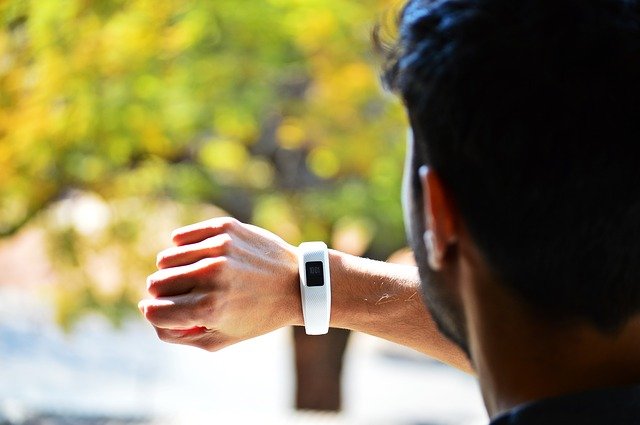In a scenario where we are increasingly connected to the digital world —via smartphones, tablets, notebooks, smartwatches , and so on—it's not hard to see the growing use of technology in sports.
Currently, it plays an essential role, helping countless athletes, from different sports modalities, to evolve their performance in preparations and tournaments.
Monitoring the progress of matches has also become easier and more efficient, thanks to smart devices. Want to learn more about the importance of technology for sports? Follow the following!
Learn more about Anatel Certification, what steps to get it and how Master can help in this process!
What is technology in sport?
The sports environment has always been quite complex. The search for new strategies and techniques to improve the performance of athletes, led to the adoption of methods, objects and accessories in the routines of different modalities.
All this is done with the idea of providing more comfort for the sportsman, while it is possible to extract an excellent performance.
In addition, the technologies applied to sport help to obtain fundamental data for the reproduction of sports statistics. Thus, the coach's decision-making for his athlete is improved.
What are the benefits of technology in sport?
As we have made clear so far, technology has become a great ally of the sport, providing numerous benefits to the environment.
Each innovation that comes in the market, encourages athletes to exceed their limits, in addition to supporting judges when monitoring matches.
Thus, when the human eye fails to capture certain information, artificial intelligence covers this gap, contributing to a fairer result.
In football, for example, referees use electronic points to increase the efficiency of their actions. This same technology is also used in volleyball and tennis courts in order to increase the accuracy of results.
What is the influence of technology on sport?

Sports, such as volleyball, football, swimming, fencing, athletics and others, already benefit from the use of technological innovations.
The progress of competitive physical activities, the result of real-time communication between athletes and coaches, is remarkable. In addition, the development of special materials, in order to boost maximum performance, remains constant.
They are smart costumes, devices with sensors for data collection, as well as performance analysis. The main technologies responsible for these advances are:
- Nanotechnology: involves the manufacture of tissues with nanoparticles, which stiffen in case of impact, in order to protect the athlete from injury. It is a technology still under study, but it presents promising data;
- biomechanics: widespread in swimming, monitors the strokes and jumps of athletes, in addition to tracking their heart rate. It plays a role in the development of fast skin, a special costume that reduces the body's friction with water in competitions;
- Hawk eye: Used on tennis courts, this technology represents a system of monitoring cameras, capable of identifying the ball from any angle after its release.
- ICT (Communication and Information Technology): Artificial intelligence used in different games to help the coach identify the strengths and weaknesses of his athletes in order to improve them more efficiently.
What are the 4 technologies used in the sport?
The sporting world evolves continuously and therefore also requires constant change. The results generated by athletes can always improve, as well as the accuracy of monitoring during tournaments.
From simple processes to great solutions, you may have heard of some of the key technologies used in sport today. See below.
1. Video Assistant Referee (Var)
VAR has gained a lot of popularity recently in football. This technology allows the conference of bids in a match, with the objective of enabling the referee to analyze the bids. This reassessment has been decisive in determining whether or not a team is punished.
2. Fencing costume
Do you often watch fencing competitions? Otherwise, you may have wondered how scoring works in this dynamic sport.
Full of quick moves, it is clear that fencing could not depend only on the look of the judges to define the winners of each match. This would open scope for somewhat inaccurate results.
In this way, florets and swords were developed with intelligent sensors, capable of detecting the impact of each hit on the opponent. When pressed, the sensors activate a light on the signaling device.
For this to work properly, the costumes allow a small electrical current to travel its entire length.
3. SmartWatch
Smart watches are no longer new in the market. There are simpler models for casual sportsmen, even smartwatches with state-of-the-art technology to monitor the performance of elite athletes with maximum accuracy.
They can measure the heart rate, amount of calories expended, steps taken throughout the day and even the level of oxygenation in the blood.
4. Smart Fabric
Another technology that allows you to take a step further in performance monitoring, are smart costumes. This solution consists in the manufacture of special clothing, connected to sensors that analyze the movements performed by athletes.
From this, it is possible to monitor the muscles used in the activity, the heartbeat and the level of breathing. All in real time.
Technology trends in sport

So far, it has been proven that technological innovations in the sports environment only increase. To ensure the evolution of the sector, many businesses are investing in solutions to increase the performance and attention of the athlete, but also improve the experience of the public.
Thus, the focus has been on improving and customizing the experience of those who attend the events. A great example was The Football Club Barcelona, which developed the Barça Innovation Hub.
It is a laboratory focused on research and innovation, in order to raise the experience of visitors and fans in their matches.
Contact Master to understand how to get your Anatel Certification quickly, simply and without bureaucracy!
Conclusion
See how technology in sport is more present than we can imagine? As long as there are ways to improve athletes' performance, accuracy in decision making and monitoring of games, there will always be investments in the sector.
